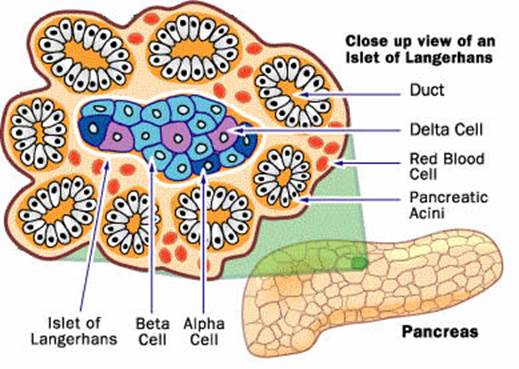
The Islets of Langerhans commonly referred to as "islets" are irregularly shaped patches of endocrine tissue located within the pancreas. They are named after the German physician Paul Langerhans, who first described them in 1869.

The islets consist of four distinct cell types, of which three (alpha, beta, and delta cells) produce important hormones; the fourth component (C cells) has no known function. Beta cells sense sugar in the blood and release the necessary amount of insulin to maintain normal blood sugar levels. Type 1 diabetes, is a chronic condition in which beta cells produces little or no insulin. When Eli Lilly began producing insulin in 1922, it called its insulin derived from bovine pancreas ‘Iletin’.

The alpha cells of the islets of Langerhans produce an opposing hormone, glucagon, which releases glucose from the liver and fatty acids from fat tissue. The delta cells produce somatostatin a strong inhibitor of somatotropin, insulin, and glucagon.

